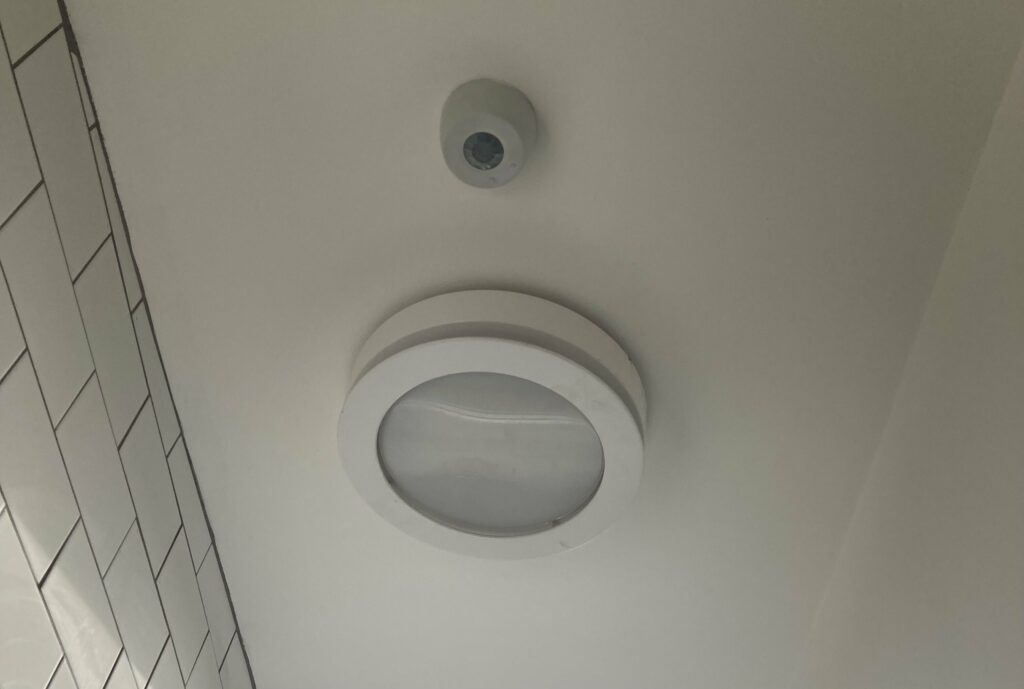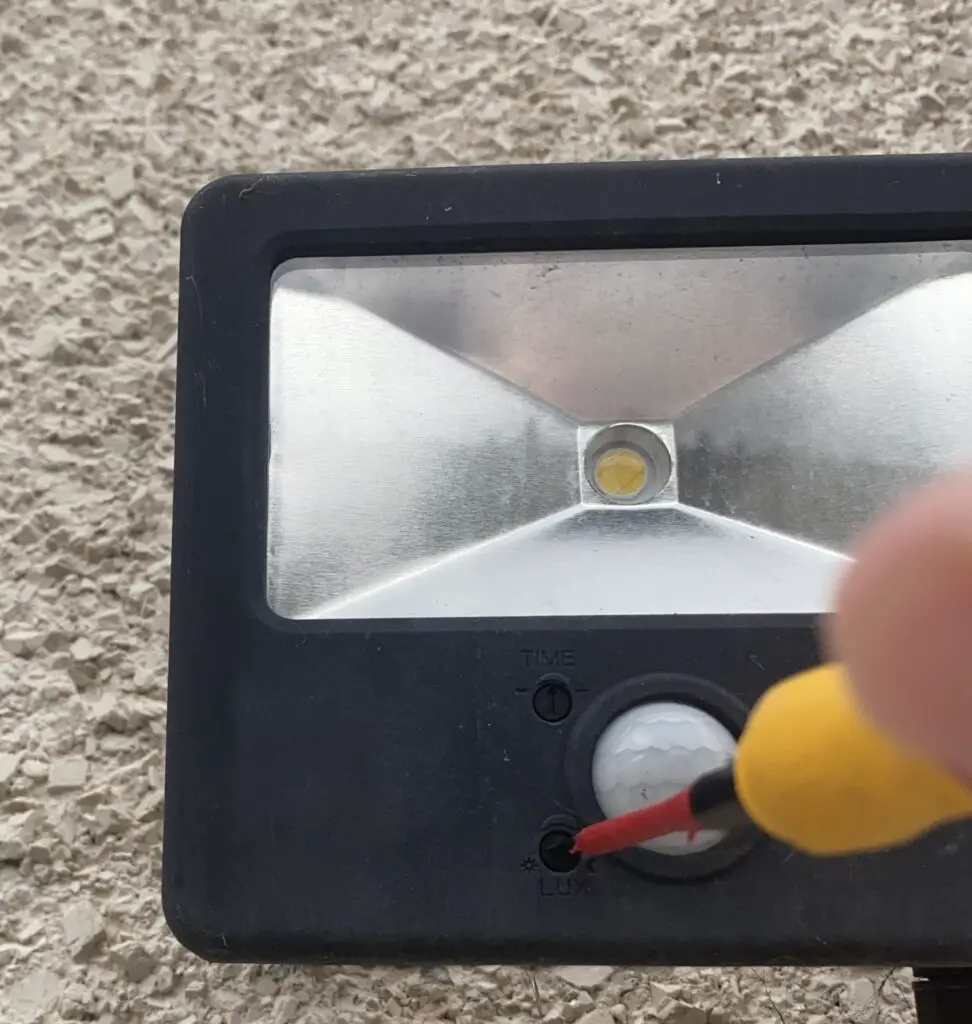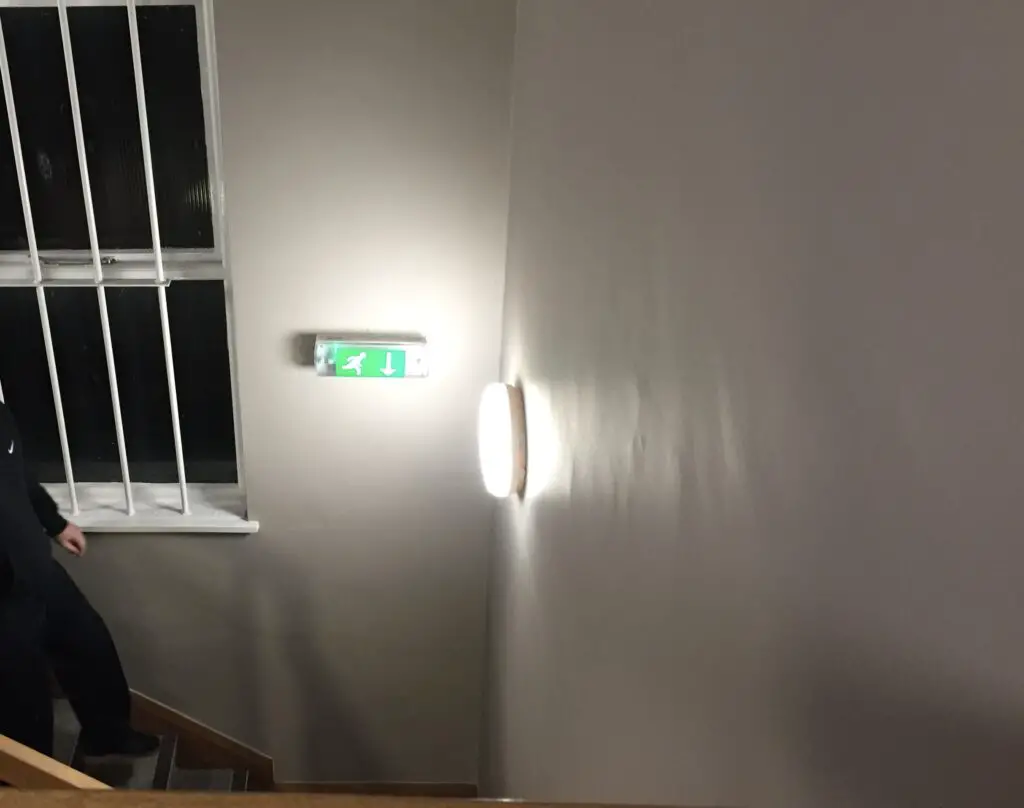Motion sensors are amazing pieces of kit. They control our lighting without even needing to lift a finger, plus most are able to detect if it is daylight when we don’t even require the light to spring into action. However, although motion sensors are great, they can be a real annoyance if they are too sensitive and come on when not required.
This article will look at what causes a light motion sensor to be too sensitive and importantly how to adjust a motion sensor light that is too sensitive! Without further ado, let’s get into this.

If a motion sensor light is too sensitive it is not just an annoyance to humans but also negatively affects the wildlife around the area. Resetting the light often fixes the problem, adjusting the sensitivity setting is another potential fix or one of these other options may do the trick.
The Effects of a Motion Sensor Light that is Too Sensitive
It is likely that your motion sensor light has been working just fine so before we look to how to fix the problem, it may be worth spending a few minutes looking at the reasons why we should put the effort into fixing it. After all, it is only a light coming on too often, could we just ignore the problem?
Apart from the obvious excessive energy consumption of having a light on when not required, we also run the risk of shortening the lifespan. Although LEDs can last for up to 10,000 hours, the constant turning on and off can overwork the internal electronics resulting in an earlier-than-expected trip to the WEEE waste skip.
False alarms, and the decreased security these bring, are other reasons why an oversensitive motion sensor light is a bad idea. I have a light in my back garden, and when it triggers unexpectedly it does a great job of alerting me to the presence of something (or someone) unexpected in the garden.
Sure, so far I have been lucky and it is usually just a wandering cat, but it doesn’t hurt to check. If our motion sensor light is too sensitive, we ignore these warning signals.
Finally, alongside the obvious annoyance and inconvenience to us humans, an oversensitive motion sensor light has a negative effect on wildlife. It’s not just my friend the neighbour’s cat who looks annoyed when the light disturbed him, other wildlife is also affected.
There is in fact there is a big movement in the industry into dark night regulations and the reduction of light pollution. It also transpires that the white LED lighting is also not good for wildlife and we should be switching to more orangey colours for outside lights (typically 3000K or even 2700K)

Solutions for a Motion Sensor Light that is Overreacting
Hopefully, we are now all on board that turning a blind eye and ignoring our oversensitive light motion sensor is probably a bad idea. This means we need to know how to fix it. Fortunately, there are plenty of things we can try before resorting to a new sensor or calling an electrician out.
Firstly we need to make sure we have tried resetting the motion sensor, the good old turn it off and on again trick! To do this turn it off at the override light switch, or if there isn’t one, then we can reset the circuit breaker that the circuit is on. Like all electronics, a simple on-and-off reset can work but if it doesn’t there is another easy fix.
Many motion sensor lights come with a sensitivity setting that can be adjusted. These usually look like little knobs that a screwdriver can be inserted into and turned (like the photo above). It can be a bit tricky to locate the settings dial, potentially hidden under a cover or flap, so downloading the manufacturer’s instructions is a good shortcut.
Remember to consult a professional electrician if you are not comfortable adjusting the settings or simply want someone else to take the hassle off your hands.
As an electrician, I have learnt it is usually far quicker to swallow pride and get the manufacturer’s instructions up on the phone than mess around trying to find the cute place the designer of the sensor has integrated the setting into!
The sensitivity adjustment knob may be labelled as ‘sensitivity’, ‘range’, or a bespoke symbol that the manufacturer has chosen. Usually, there is a ‘plus’ or ‘minus’ sign to indicate if we are increasing or decreasing the setting. If there isn’t then increasing is usually clockwise and the reverse to decrease.
Testing and fine-tuning the adjustment of the motion sensor sensitivity can be a bit of a long-winded affair. To speed up the process I tend to adjust it to as low sensitivity as possible, test, and increase upwards accordingly until I get to the desired level. We don’t want the opposite problem of the light staying permanently on.
A top tip before doing this is to adjust the duration to as low as possible. This means that you are not standing around waiting for half an hour for the light to turn back off in between every sensitivity activation test. Once satisfied with the sensitivity, simply adjust the duration back to the desired setting.
Adjusting the sensitivity of a light motion sensor is very much a process of trial and error, but the good news is that if the adjustments are having an effect, the sensor is functioning correctly and it is just about finding the right level. When they work, they are a great alternative to standard switches.
If adjusting the sensitivity settings is not having any real impact, or still not working at the desired level, fear not, as there are other factors we can now look at.

Other Options if Adjusting the Sensitivity Settings Doesn’t Fix an Oversensitive Light Motion Sensor
If adjusting the settings described above hasn’t solved the problem of the light motion sensor being too sensitive, we can try the solutions below. A couple of these are common fixes that I have used many times and do work. Unfortunately, the ones at the bottom are not so easy to implement.
The next step is to clean the sensor with a soft cloth. Try to avoid using detergents as these can damage the sensor and leave a film causing interference. It’s often surprising how much dirt and debris collects on the sensor. It’s a bit like my windows, I hardly ever get around to cleaning them, but when I finally do, I am always amazed at the difference it makes.
If cleaning it hasn’t worked, we are now in the realm of moving the sensor to a new location (if possible) or shielding part of the sensor. A poorly positioned motion sensor will pick up unwanted movement, so what appears to be oversensitivity is in fact correctly operating just picking up unwanted movement (perhaps the dog in next door’s garden)
If shielding the motion sensor is the preferred option, we need to block part of the sensor so it can not detect movement from certain areas. Partly covering a part of the sensor with electrcians tape (amazon link) is a good way to test if shielding will work.
I don’t love this method as it is a bit temporary in my opinion, even though the tape linked above is very good, it still struggles to stand up to harsh outdoor conditions (in fairness, it isn’t designed to).
Once the above methods have been tried, unfortunately, we need to start thinking that it may be a defective sensor or that the motion sensor we have chosen is not suitable for the task. If the motion sensor is built into the light, this may mean replacing the entire light fitting.
Whilst it is possible to replace just the motion sensor in a lot of lights, this involves sourcing the correct part and potentially soldering connections together. I guess it depends on whether or not this is something that interests you, if you are a hobbyist and enjoy fixing things why not give it a go?
As an electrician, the majority of times I would replace the sensor or the complete light if the sensor is built in. In terms of time and value for money, it normally wouldn’t make economical sense for me to charge for hours of sourcing a part and replacing it. It is more cost-effective to turn up with a new motion sensor or motion sensor light and replace in one visit.
If replacing the light motion sensor because it has become too sensitive, it is worth taking a look at the different types of sensors and lights available. Different sensors perform to different standards. The most commonly used lighting are Passive infrared detectors and microwave detection sensors, you can read more about the different types here.
Choosing a higher quality light from a reliable brand will also help, remembering that whilst we are changing the light it is worth taking into account the dark night guidance and the effect of ill-thought-out lighting on the local wildlife.
If considering replacing a light or a light motion sensor I would always advise calling a local electrician in to carry out the work. As well as the basics, they will also check for wiring faults or electrical interference and will know the safe way to carry out the work, remember that electricity can be lethal.

